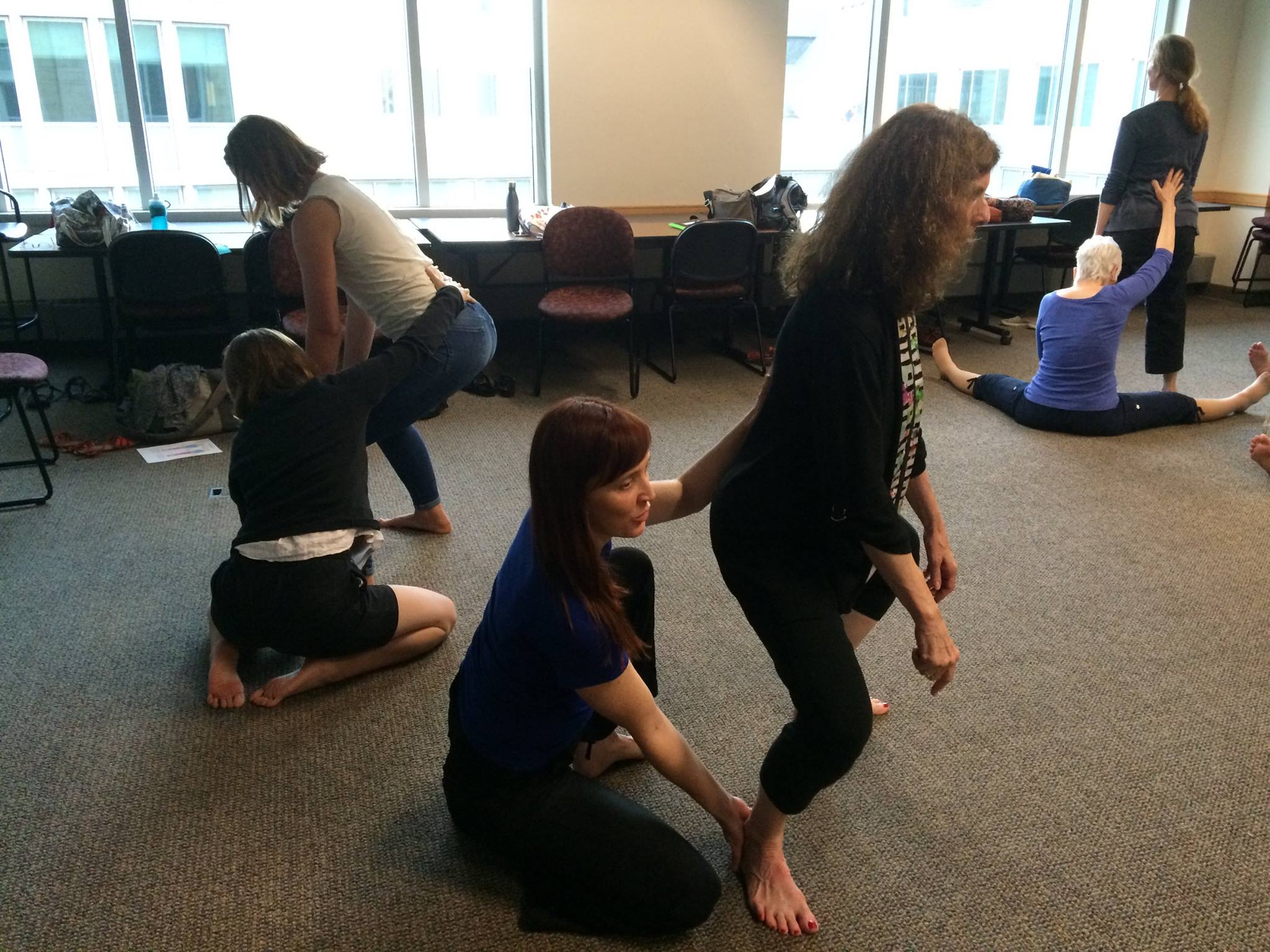
Exploring lower half of the body schema and squatting
Why is it that Alexander Technique seems to significantly lesson chronic pain conditions? We are finally beginning to understand the mechanisms behind this phenomena.
First, let me tell you a funny back pain story. I once saw an old friend on the street, and in the process of catching up I told my friend that I had recently completed my training as an Alexander Technique teacher. He said “Oh! I studied that! I had a series of lessons with this lady Debbie Caplan. She was such a great person but I really didn’t understand what the Alexander Technique is and I found it very confusing and really don’t think it works.”
I knew Debbie – she wrote a book about back pain in the 1980s that is still one of the most practical books on the subject, and was one of my teachers in my training. So I asked, well – why did you go to her for lessons?
“Oh I had the most dreadful back pain. I hadn’t been able to walk for almost two weeks. I think I had about 5 lessons with her.”
Wow, OK. So…what happened to your back pain?
“O yeah. Well, actually, it went away and it’s never returned, so I lost touch with her.”
So weren’t you curious about why your back pain went away, and why it never came back?
“No, I was just so happy I forgot about it completely.”
I get it. Chronic pain is horrible and scary, and we just want to get rid of it. There are many versions of this story – some where the pain relief is not as stark and clear as this, some where other problems like anxiety and balance issues resolve but the pain levels stay almost consistently the same, but the person is not tensing themselves up all over to avoid it and so their life improves. And that improvement then supports further wellness…and in time, the pain resolves.
It’s a long haul sometimes, and I think understanding can help you, the “layperson,” stick with the work during that haul when the going gets tough.
A new theoretical framework for why the Alexander Technique works like this is slowing being built up by a group of scientists who want to know the answer to this question. They have just published a paper outlining their hypothesis in Kinesiology Review.
This kind of scientific writing can be very difficult to understand, so try this simplified version that the Alexander Technique and Science group has put together for the layperson, or just keep reading because I’ll summarize the two key points regarding pain relief for you below.
1) The Alexander Technique makes postural tone more adaptable and less rigid:
Practicing the AT redistributes postural tone from the bigger, superficial muscles of the body (which are designed to facilitate movement of the body parts in space) to the deeper muscles closer to the bones that facilitate postural integrity (uprightness to the best of one’s capacity) in relationship to the pull of earth’s gravity. When this deeper postural tone kicks in, you get sensations of spreading, expansion, lightness and ease.
2) The Alexander Technique improves accuracy, completeness, and detail of your body schema (the unconscious internal representation of your own body):
Studies have shown that chronic pain literally makes the body part affected feel smaller and courser (less detailed). It could be that this fuzzing of the body schema restricts blood flow to tissues and nerves, as well as contraction of tissue that literally squeezes the nerves causing a more intractable pain cycle. A more accurate body schema also apparently creates more effective movement strategies.
Movement in general can improve body schema, but Mobilignment™ is designed specifically to expand, explore, and stretch it. When you come to a Mobilignment™ class you will first take time to experience a more voluminous hand, or foot, or hip, before going into movement activity and dancing. This gives you a larger impression of forgotten body parts and of your whole moving body in space. This in turn increases blood and oxygen that brings healing to a hurt part. It’s way more fun than pain killers!
We are still just at the beginning of understanding. There is so much more to discover, and that is the experimental spirit that fuels all my coaching and classes.
Upcoming offerings are:
1) Weekly Mobilignment™ classes:
Dancers at heart of all ages and abilities, come exercise your neuroplasticity to its utmost with mindful movement!
Book a spot in the Monday & Wednesday Mobilignment class here.
2) 6 month facilitated Mastermind for Embodiment Innovators who want to thrive online:
Do you want to jump-start your online business and learn Mobilignment™ practices in the process? Interview for a spot in the January cohort of my DOUBLE VALUE 6 MONTH FACILITATED MASTERMIND focusing on fluid & playful embodiment online, business clarity, and financial abundance for online educators.
You can sign up for a free interview here. The November cohort is full, but there are still a few spots open in the January one.
3) Need to help with moving through and injury or just want to rejuvinate your bodymindsoul?
Book a private session ONLINE or IN PERSON.
4) Need to rejuvinate but still struggling financially during this dreadful pandema-recession?
Check out my YOUTUBE CHANNEL.
Much love,
Clare

